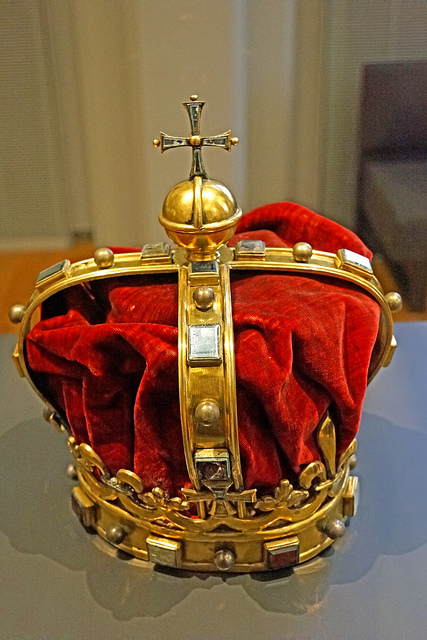Breaking News: England has a new royal! Posted by Gabriele on May 4, 2015 in News
Have you heard the news? There is a new royal in the family! The Duke and Duchess of Cambridge, or as they are also known, Prince William and Princess Kate, have just had their second child, a little princess.
The proud parents are of course being very protective of their new little one, so we will have to wait a little longer to find out more about the new princess, but in the mean time, the birth of this new royal baby gives me the perfect opportunity to introduce some “royal” vocabulary and explain the line of succession to the British throne.
Let’s start with a few “titles.” Royalty are given titles, beyond those titles that you or I might use, like Mister (Mr.), Misses (Mrs.), etc. English titles for the highest level of royalty include: king (male), queen (female), emperor (male), and empress (female). These are the titles used for rulers of countries or kingdoms. After each title here I have indicated if it the title is used for a male (m) or female (f). The children of a king or queen also have special titles, which include: prince (m) or princess (f). Additional titles often given within a royal family include: duke (m), duchess (f), count (m), countess (f), etc. Figuring out who gets what title within the immediate royal family is beyond my expertise, but this foundational vocabulary, introduced above, is a good start. Please keep in mind that in English titles are always capitalized when referring to a specific person. They are not capitalized when referring to royalty in general. For example: ‘Prince George’ vs. ‘The princes gathered together.’
Here are some additional royal vocabulary words for you.
(n) = noun
(v) = verb
castle (n) – a large stone building, constructed to protect the people within it against attacks; in the past royalty often lived in castles
coronation (n) – the ceremony in which a king or queen officially becomes the ruler of their country; in this ceremony a crown is placed on the head of the new ruler
crown (n) – a round headdress worn by a king, queen or other royal family member as a symbol of authority; crowns are often made of precious metals and decorated with jewels
highness (n) – a title given to a person of royal rank; the title is used in addressing a king or queen; for example: “Welcome your highness.”
line of succession (n) – see below
monarch (n) – a head of state who became ruler through birth right, i.e. a king, queen, or emperor
monarchy (n) – a form of government in which a monarch (see above) is in charge
palace (n) – a large impressive building where royalty often live
reign (n) – the period during which a monarch rules
reign (v) – to hold royal office; to rule as king or queen over a country or kingdom
scepter (n) – a staff that is a symbol of authority; it is often carried by a king or queen during official ceremonies
throne (n) – the chair that a king or queen sits in; a chair that is a symbol of authority
The line of succession is the order in which members of the royal family progress to the throne. The newly born princess has now entered this line of succession. So, let’s take a look at what that order is, and where the new princess fits into it, and how to use some of the vocabulary introduced above.
In Great Britain, the current monarch is Queen Elizabeth II. She lives in London in Buckingham Palace. Queen Elizabeth was born in 1926. Her coronation ceremony was in 1953. Her reign is one of the longest in English history – 62 years. Queen Elizabeth’s son, Prince Charles, is first in line for the throne. Prince Charles was born in 1948. He is the oldest son of Queen Elizabeth and her husband, Prince Philip. Prince William is Prince Charles’ oldest son, and therefore the next in line for the throne. Prince William was born in 1982, and married Kate Middleton in 2011. Their first son, Prince George, was born in 2013 and is third in line for the throne. Now, the newest royal, the new princess, is the fourth in line for the British crown.
Welcome to the world princess!

Build vocabulary, practice pronunciation, and more with Transparent Language Online. Available anytime, anywhere, on any device.
About the Author: Gabriele
Hi there! I am one of Transparent Language's ESL bloggers. I am a 32-year-old native English speaker who was born and raised in the United States. I am living in Washington, DC now, but I have lived all over the US and also spent many years living and working abroad. I started teaching English as a second language in 2005 after completing a Master's in Applied Linguists and a Certificate in English Language Teaching to Adults' (CELTA). Since that time I have taught ESL in the United States at the community college and university level. I have also gone on to pursue my doctorate in psychology and now I also teach courses in psychology. I like to stay connected to ESL learners around the world through Transparent Languages ESL Blog. Please ask questions and leave comments on the blog and I will be sure to answer them.




